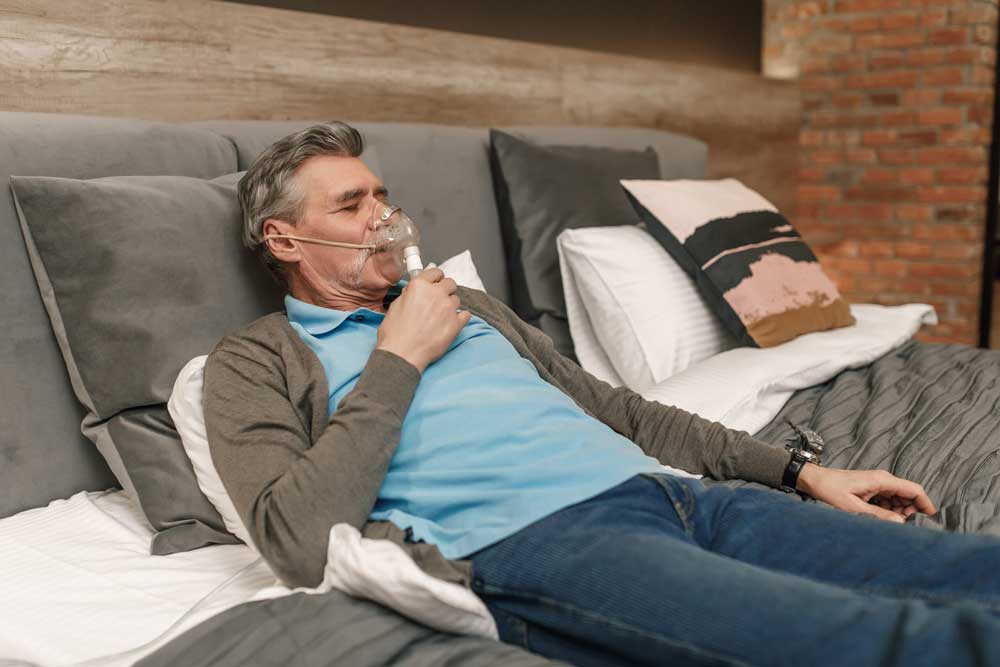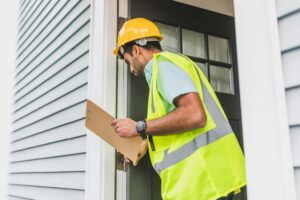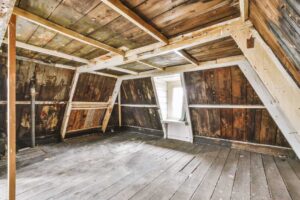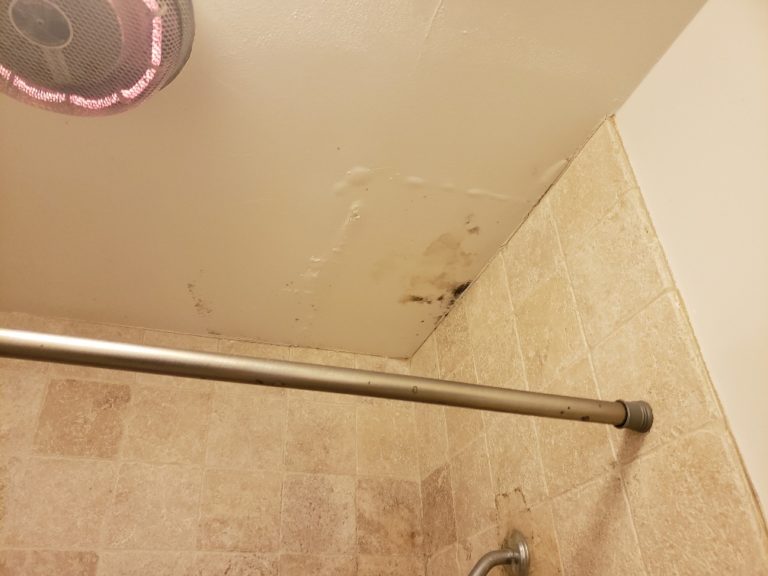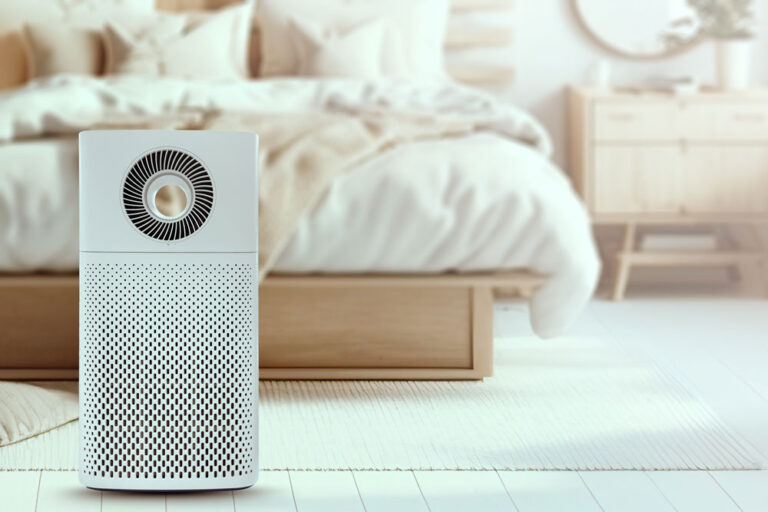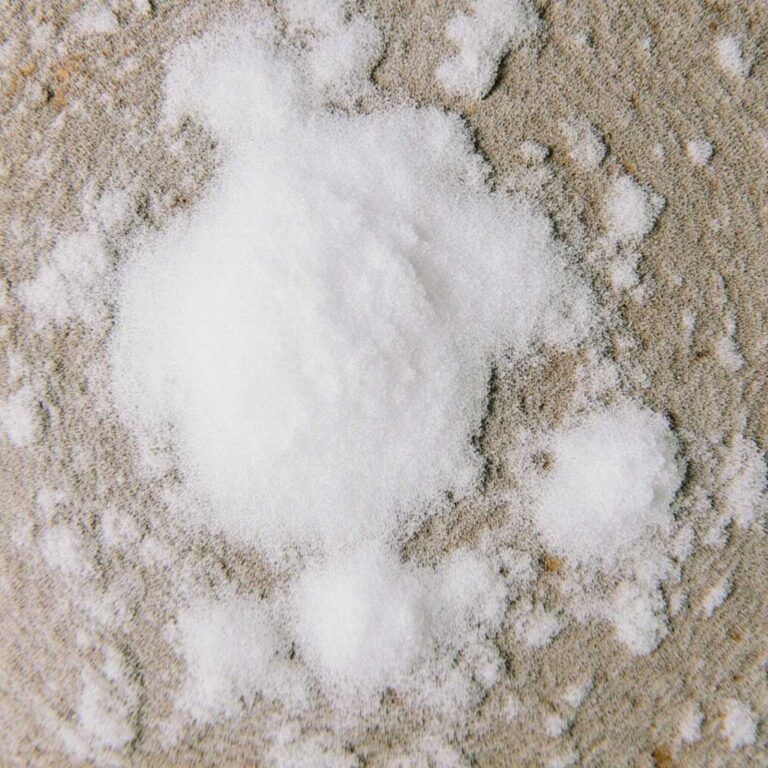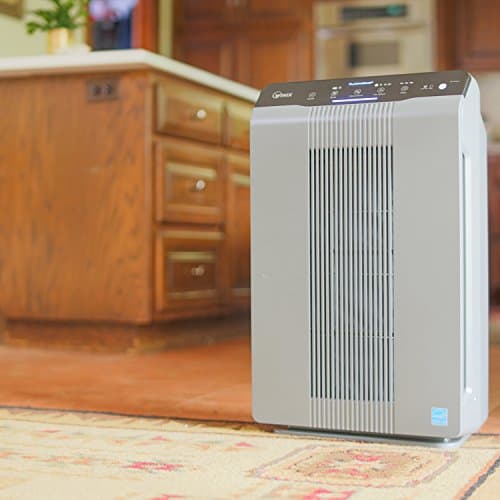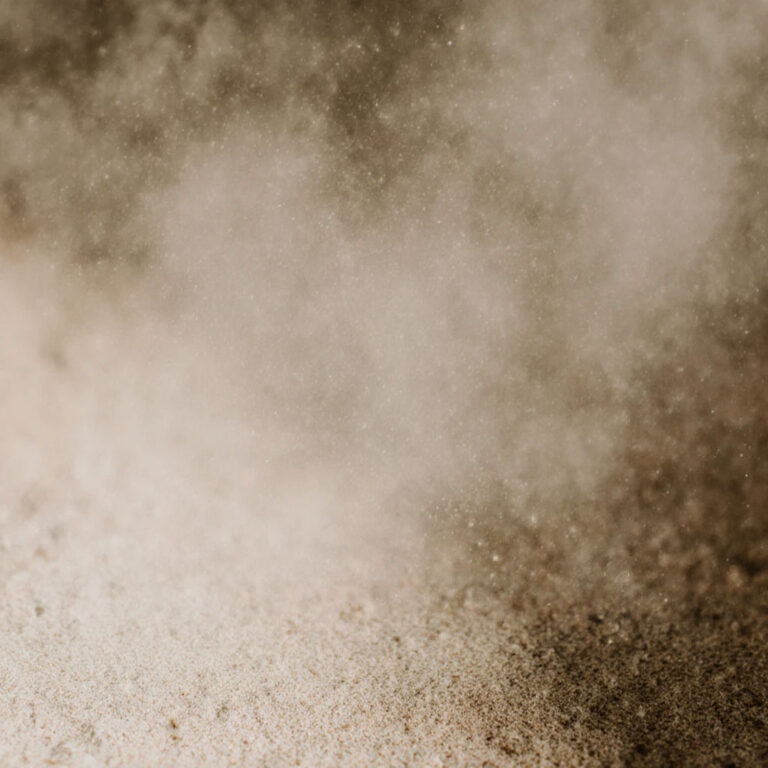Too many chemicals can harm your health during mold cleanup. Explore safer, effective mold removal methods that protect both people and property.
You Called for Help but Got a Chemical Hazard Instead
It started like any typical mold cleanup.
A young family discovers patches of mold behind their basement shelves. They act fast; hire a remediation company, clear out the space, and step back to let the “experts” handle it.
Two hours later, the job is “done.”
The air smells sharp and sterile, like an over-sanitized hospital room. The contractor says it’s fine to reenter. “We sprayed the whole area. You’re safe now.”
But within days, their infant develops a rash and starts wheezing at night. The family’s dog refuses to enter the basement. No one connects the dots until a second opinion reveals the truth: what was meant to make the home safer had filled it with airborne chemical residues.
Mold was only part of the problem.
The so-called solution became a health hazard of its own.
If it smells clean, it must be clean, right?
That’s the trap. Most homeowners assume that if a contractor uses “strong stuff,” the problem’s solved. In fact, some people believe that the harsher the smell, the more powerful the clean. But that’s not quite right.
The overuse of chemical agents in mold remediation, especially when used to mask rather than remove, can leave behind volatile organic compounds (VOCs), lung irritants, and toxins that linger in your air long after the workers leave.
This blog is your wake-up call.
Here’s What You’ll Learn
- The hidden risks of popular mold treatment sprays and disinfectants, especially for kids, pets, and people with respiratory conditions
- Why “spraying and sealing” isn’t real mold removal and how to tell if your home was cleaned or just covered up
- Safer, science-backed alternatives that target mold without poisoning your air
Because a clean home should never come at the cost of your family’s health.
The Most Overused Chemicals in Mold Treatment and Their Health Risks
What’s In That Spray? You Probably Weren’t Told
Here’s a troubling truth: many mold remediation companies don’t tell homeowners what they’re spraying or what it could do to their health.
You may get a one-line summary: “We use hospital-grade disinfectants.”
But what does that actually mean for your air, your skin, your children’s lungs?
Let’s break down the chemicals most commonly overused in mold remediation and why blind trust in the bottle could be making your home less safe.
Chemical Classes You’re Not Being Warned About
1. Quaternary Ammonium Compounds (Quats)
- Found in: “Hospital-grade disinfectants” and fogging sprays
- Risk: Skin rashes, asthma triggers, and long-term respiratory inflammation
- Especially dangerous for: Children and people with eczema or sensitive skin
According to a study in Occupational & Environmental Medicine, repeated exposure to quats has been linked to reduced lung function among cleaning professionals.
2. Chlorine Bleach (Sodium Hypochlorite)
- Found in: DIY sprays, cheap contractor treatments
- Risk: Highly corrosive, creates chlorine gas when mixed with other cleaners, contributes to VOCs
- Especially dangerous for: Asthmatics, pets, and anyone in enclosed spaces
“Chlorine-based products can cause serious lung and eye irritation when used in poorly ventilated areas.” CDC Mold Cleanup Guidance, 2022
3. Hydrogen Peroxide-Based Oxidizers
- Found in: Many branded “mold killer” sprays
- Risk: Milder than bleach, but can cause eye and airway irritation when used in high concentrations (above 30%)
- Safer but still requires ventilation and protective gear
4. Formaldehyde-Based Fungicides
- Found in: Industrial-strength mold control solutions, especially older products
- Risk: Probable human carcinogen, severe respiratory irritant
- Usage has dropped, but some outdated contractors still use it
Banned or restricted in multiple states due to cumulative toxicity.
5. Phenolic Disinfectants
- Found in: Some legacy disinfectants
- Risk: Strong odor, possible skin absorption, long-term neurotoxicity concerns
- Not recommended for use in homes with children or pets
Who’s Most at Risk?
Even small traces of these chemicals can cause symptoms, especially in vulnerable populations:
| Group | Common Symptoms |
| Children | Rashes, coughing, unexplained allergies |
| People with asthma | Breathing issues, chest tightness |
| Pregnant women | Increased sensitivity to chemical inhalants |
| Pets | Vomiting, paw irritation, respiratory stress |
| Everyone long-term | Headaches, fatigue, hormonal disruption (from VOCs) |
According to the Environmental Working Group (EWG) 2023 Indoor Air Safety Report:
“Many green-labeled cleaning products still contain VOCs above safe exposure thresholds for children and other sensitive groups.”
The Hidden Problem: You’re Rarely Told What Was Used
One of the most concerning trends in the mold industry? The lack of transparency.
Most companies:
- Don’t disclose chemical ingredients unless asked
- Skip over proper ventilation and drying times
- Use generic terms like “disinfectant” or “treatment agent” to avoid liability
What You Should Always Ask For:
- Full list of products used
- Access to Safety Data Sheets (SDS)
- Recommended ventilation and reentry times
- Third-party post-remediation air quality testing
You deserve to know what was sprayed in your home and how long those compounds will linger.
Why Physical Removal Beats Chemical Overkill
Why Spraying Isn’t Cleaning: What Mold Professionals Know That Most Don’t
Let’s bust a dangerous myth.
If your home smells clean after a mold treatment, sharp, sterile, almost like a medical clinic, you might assume the problem’s been handled.
But here’s what experienced mold professionals will tell you, and what far too many “quick fix” contractors won’t:
Smell is not safety. Spray is not removal. Dead mold is still dangerous.
The Illusion of Effectiveness
When contractors fog, spray, or mist your home with antimicrobial chemicals, the air may feel cleaner. The visible mold might even appear gone.
But in most cases:
- Spores remain on surfaces, fabrics, ducts, and wall cavities
- Dead spores still trigger allergies, asthma, and inflammation
- And if moisture wasn’t addressed? It’s all coming back
According to the IICRC S520 Standard for Professional Mold Remediation, mold remediation requires physical removal of contamination. Killing or attempting to kill mold without removal is not acceptable.
What Real Mold Remediation Looks Like (No Shortcuts Allowed)
Every reputable remediation job follows a multi-step process designed to eliminate mold, not just cover it up.
1. Source Moisture Identification and Control
No moisture, no mold. This is non-negotiable. Mold is the symptom; water is the cause. Without resolving leaks, seepage, or humidity, any cleanup is temporary.
2. Containment Setup
Professionals seal off affected areas with plastic barriers, apply negative air pressure, and use HEPA air scrubbers to prevent spores from spreading during cleanup.
3. Physical Removal: The Core of Real Remediation:
- HEPA Vacuum Cleaning: Captures microscopic spores from hard surfaces, floors, joists, and even the air.
- Damp Wiping with Mold-Safe Detergents: Surfaces are hand-wiped, not sprayed from a distance.
- Manual Mold Remediation: Involves scrubbing, scraping, or sanding contaminated areas — labor-intensive, but crucial.
- Controlled Demolition (If needed): Only materials that are saturated or structurally compromised are removed, not entire rooms on a guess.
The gold standard is “remove, not kill.” Anything porous with mold growth, drywall, insulation, carpet, must be taken out. Spraying alone is a red flag.
National Association of Environmental Remediation Contractors (NAERC), 2023
4. Post-Remediation Verification
Whether through a third-party air quality test, moisture meter check, or a visual clearance inspection, professionals confirm that cleanup was successful before rebuilding begins.
Why Spray-Only Approaches Fail Over and Over
Spray-and-go “solutions” don’t just fall short, they backfire:
Mold Recurrence
Surface treatment doesn’t reach behind walls, beneath floors, or inside insulation. As such, moisture and mold return fast.
Ongoing Health Complaints
You may not see the mold, but your body feels it in sinus issues, itchy eyes, fatigue, and asthma flares. Dead mold can still produce mycotoxins and allergens.
False Peace of Mind
This may be the worst part: You think the job was done and let your guard down. Months later, you discover it never was.
Homeowner Takeaways: What to Look For
- Ask your contractor to explain what’s being removed, not just what’s being sprayed
- Require HEPA vacuuming and physical cleaning in the quote
- Confirm there will be post-remediation verification
- Be skeptical of “treatment” that doesn’t mention containment, drying, or removal
Green Alternatives That Actually Work
From Plant-Based Power to Enzymes: Safe Mold Killers That Work with Science
If your instinct says, “There must be a safer way to fight mold,” you’re absolutely right.
Not every mold situation requires hazmat-level chemicals. In fact, some of the most effective mold solutions today rely on natural compounds, smart cleaning processes, and science-backed mechanical removal, not just heavy-duty sprays.
Let’s walk through the green mold remediation tools that protect your health, your home, and your air quality without compromising on effectiveness.
Comparing the Most Common Mold Removal Methods
| Method | Effective? | Health-Safe? | Eco-Friendly? | Notes |
| Chlorine Bleach | ✅ (on hard surfaces) | ❌ | ❌ | Harsh on lungs and skin; corrosive to wood & metals |
| Hydrogen Peroxide (30%) | ✅ | ⚠️ (use with care) | ✅ | Oxidizing agent; safer than bleach, but still reactive |
| Enzyme-Based Cleaners | ✅ | ✅ | ✅ | Breaks down mold at the cellular level; non-toxic |
| Vinegar (Acetic Acid 5%) | ⚠️ (light cases only) | ✅ | ✅ | Doesn’t kill all mold types; good as a preventive measure |
| HEPA Vacuum + Damp Wipe | ✅✅ (most reliable) | ✅ | ✅ | Physical removal = most thorough + safest |
| Fogging/Ozone Machines | ⚠️ (temporary only) | ❌ | ❌ | Often misused; leaves harmful residues and ozone gas |
What Makes a Green Product Truly Safe and Effective?
Not all “green” labels are created equal. Some are just marketing while others are backed by real testing and regulation.
Look for these 3 signals of legitimacy:
1. GreenGuard Gold Certification
Verifies low chemical emissions for indoor air quality, especially important for kids and sensitive populations.
2. EWG Verified™ Products
Endorsed by the Environmental Working Group for ingredient transparency and health safety.
3. Fragrance-Free and VOC-Free Labels
Avoid anything with added scents, they’re often loaded with hidden irritants.
Top Green Alternatives to Look For
Here are a few mold-safe cleaning agents often used by eco-conscious pros:
- Benefect Decon 30: Plant-based, thymol-powered antimicrobial. EWG Verified.
- Concrobium Mold Control: Non-toxic, leaves no VOCs, often used by green-certified remediation teams.
- EC3 Mold Solution Spray: Citrus seed extract-based, effective as a preventive and treatment spray for light contamination.
Why Going Green Isn’t Just About the Environment
It’s about your:
- Lungs
- Children’s safety
- Long-term indoor air quality
- And preventing chemical buildup in porous materials like carpets, upholstery, and drywall
You should never have to choose between eliminating mold and preserving your well-being.
With the right tools, you don’t have to.
Homeowner Takeaways:
- Choose enzyme-based or plant-powered products where possible
- Always combine any spray with physical removal methods (HEPA vacuuming + wiping)
- Vet your contractor’s chemical list before work begins
- Don’t fall for harsh fogging or ozone machines promising “instant mold removal”
How to Keep Your Family Safe During and After Treatment
Ventilate, Verify, and Don’t Rush Back In
You hired a mold remediation company to make your home safer, not to create new hazards.
But here’s what most homeowners don’t realize: even a well-done cleanup can leave behind chemical residues and airborne irritants if safety protocols aren’t followed.
If your contractor doesn’t walk you through exactly how and when to reenter your home safely, it’s not just unprofessional, it could be dangerous.
Key Steps for a Safe and Healthy Reentry
Here are the critical safety measures every responsible remediation team should take, and that you have the right to ask for:
1. Know the Reentry Wait Times
Depending on the products used, you (and your pets) may need to wait 24–72 hours before reentering treated areas.
- Fogging treatments? Wait at least 24 hours, preferably longer.
- Chlorine-based or VOC-heavy agents? Require strong ventilation and longer drying times.
- Plant-based or enzyme treatments? Usually safe after 4–12 hours of ventilation.
The EPA advises that you ensure adequate drying and air exchanges before re-occupying treated areas.
2. Ventilate Thoroughly
Before and after remediation, ensure:
- Windows and doors remain open, when possible
- HVAC systems are shut down to prevent contamination spread, unless a professional advises otherwise
- HEPA air scrubbers or fans are used to speed up air exchanges
Stale, enclosed air traps both mold spores and chemical fumes; don’t take shortcuts here.
3. Pre-Treatment Prep: Protect What Matters Most
Before treatment starts, make sure to:
- Remove toys, bedding, pet dishes, and clothes from treated areas
- Cover or move food, cooking tools, and pantry items
- Keep pets and children entirely out of treatment zones even hours after the job ends
If your contractor doesn’t recommend this step, they’re not thinking about your family’s safety.
According to the OSHA Indoor Air Quality Standards, it is imperative that the occupants of a house be protected from both mold spores and chemical residues during remediation.
4. Ask for the SDS: Safety Data Sheets
Every chemical used in your home is legally required to have a corresponding SDS (Safety Data Sheet) that outlines:
- Health risks
- Proper use
- Reentry precautions
- The protective equipment required during use
Ask for these documents before the job begins and keep a copy for your records. If your contractor hesitates or dismisses your request, consider it a red flag.
Homeowner Safety Checklist
Here’s a quick checklist to keep handy:
Frequently Asked Questions (FAQs)
Q1: What are the side effects of mold treatment chemicals?
A: Common side effects include headaches, rashes, eye or lung irritation, fatigue, and allergy flare-ups, especially in kids and pets. Some biocides release volatile organic compounds (VOCs) that linger long after application.
Q2: Can I be in the house during mold remediation?
A: It’s safest to leave the area completely during chemical treatment and return only after proper ventilation and drying, typically 24 to 72 hours, depending on the product. Always ask for reentry guidance and verify with SDS documentation.
Q3: Are green mold cleaners really effective?
A: Yes, when used with proper moisture control and physical removal. Enzyme-based and plant-powered cleaners can break down mold at a cellular level, without the toxic aftermath.
Q4: What should I ask my contractor before mold work begins?
A: Start with:
- What chemicals will be used?
- Do you follow IICRC S520 standards?
- Will there be third-party testing?
- What are the reentry safety protocols?
- Can I see the SDS for every product?
Q5: What’s the safest way to remove mold at home?
A: For small, non-porous areas, a HEPA vacuum + enzyme cleaner + proper drying is typically safe. For larger issues, hire certified pros who use low-toxicity methods and physical removal, not just sprays or foggers.
Conclusion: Mold Cleanup Shouldn’t Poison Your Peace of Mind
Let’s be clear: You don’t have to choose between mold and chemical exposure.
You called for help to make your home healthier, not to trade one danger for another. Unfortunately, many companies still rely on outdated, oversimplified methods: fog, spray, and walk away.
But now you know better.
You know what questions to ask, what red flags to spot, and what safer, smarter solutions actually look like.
Real mold remediation prioritizes health, not just appearances.
Final Word of Empowerment:
- Ask for removal, not just “treatment.”
- Demand disclosure of every chemical used
- Choose contractors who protect your family, not just their bottom line
Because no home is truly clean if the air inside it makes you sick.


